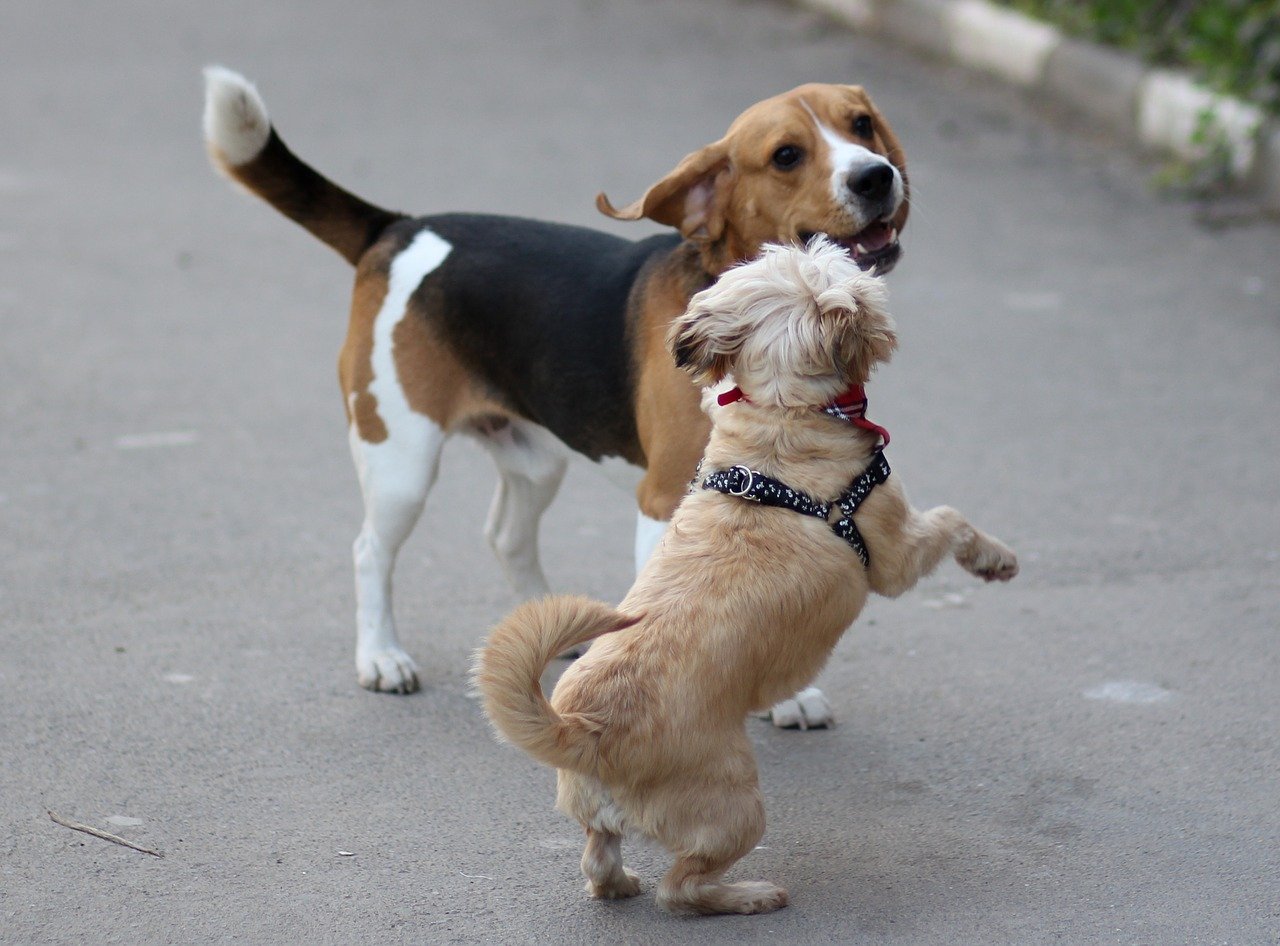Get your pup in on the Thanksgiving festivities, and give them another reason to be thankful! Turkey is one of the leanest protein sources available, making it a yummy treat and great addition to the diet of most dogs.
Giving your dog fresh, nutrient-packed turkey as part of their balanced diet is great for their overall wellness. In fact, the only reason not to consider turkey for your pup would be if they have an intolerance or allergy to it.
The holidays are a time for delicious food and special treats, including those tasty turkey legs. As you enjoy the festivities your dog is likely sitting there begging for a bite. But is it actually safe for dogs to eat turkey legs? I dug into the details as a veterinarian to bring you the complete guide on whether dogs can have turkey legs.
An Overview of Turkey Legs for Dogs
Turkey can provide healthy lean protein for dogs, along with nutrients like B vitamins, zinc and selenium. However, turkey legs themselves pose some hazards:
-
Bones – Cooked bones tend to splinter and can cause choking or internal injuries
-
Fat – The skin and meat near the bone is high in fat which can cause pancreatitis.
-
Seasoning – Turkey legs are often seasoned with things like salt, onions and garlic that are toxic to dogs.
So while the meat offers advantages, the bones and seasonings present risks. Let’s analyze these in more detail.
Potential Benefits of Turkey for Dogs
When fed in moderation without bones or skin, turkey meat does have nutritional perks:
-
Lean protein – Turkey breast is a great source of low-fat protein for dogs.
-
Vitamins and minerals – Turkey contains lots of beneficial nutrients like phosphorus, zinc and B vitamins.
-
Low calorie – With less fat and calories than many meats, turkey can be a healthy choice for overweight dogs.
-
Mild flavor – The mild taste works well for dogs with sensitive stomachs who don’t tolerate rich foods.
Potential Risks of Turkey Legs for Dogs
However, the bones and skin that come with turkey legs can cause problems:
-
Choking hazards – Dogs gulp food rapidly. Turkey bones can become lodged in throats.
-
Gastrointestinal injury – Bones splinter into sharp fragments that can perforate intestines.
-
High fat – The skin and dark meat are high in fat that can trigger pancreatitis.
-
Toxic seasonings – Many seasonings like onion, garlic and salt are unsafe for dogs.
-
Dehydration – Excess salt from seasonings causes electrolyte imbalances.
So while turkey meat is fine for dogs, bones and seasoned skin should be avoided.
Can Dogs Eat Raw Turkey Legs?
Raw bones don’t splinter as easily as cooked bones. But raw turkey legs still pose risks:
-
Raw bones can fracture teeth and block intestines.
-
Raw poultry may contain salmonella bacteria that can make dogs sick.
-
Dogs should be supervised when eating any bone to prevent swallowing large chunks.
For safety, it’s best to avoid giving dogs any turkey bones, whether raw or cooked.
Healthy Ways to Feed Turkey to Dogs
Rather than turkey legs, safer ways to feed turkey include:
-
Lean cooked turkey breast – Diced into small pieces to prevent choking.
-
Unsalted turkey dog treats – Many commercial options avoid harmful seasonings.
-
Turkey dog food – Some dog foods use turkey as the protein source.
-
Turkey organ meats – Cooked liver and gizzards add nutrients without bones.
So focus on boneless, unseasoned turkey meat. Avoid bones, skin, fats and seasoned parts. Introduce new foods gradually and supervise your dog when eating to catch any signs of trouble.
While turkey meat provides healthy protein for dogs, the bones and seasonings in turkey legs make them unsafe. The risks of choking, intestinal damage and toxicity are too high. As a veterinarian, I only recommend feeding dogs boneless, unseasoned turkey meat. With some precautions, you can still give your pup the benefits of turkey without endangering their health.

How to safely give turkey bones to your dog
It is important to select the right bone portions. I recommend:
- Raw turkey necks
- Raw turkey wing tips + wingettes
These bones can be broken down by your dogs teeth and digested. Larger bones, such as turkey drumsticks, should be avoided.
It is imperative to only give your dog raw turkey bones, as cooked bones are brittle and easily splinter when chewed. These sharp bone fragments are a choking hazard and may cause blockages or damage the digestive tract, resulting in an emergency trip to the vet.
Now, we may spend hours flavoring, roasting, and basting the turkey for ourselves, however, our furry friends don’t need this same degree of preparation. Ingredients such as onion, raisins, or large amounts of salt included in stuffings can be toxic to dogs. So skip the seasonings; trust me, they wont miss out.
Turkey bones are much larger than other poultry options, such as chicken or duck, and are, therefore, much more suited to larger mouths. Because of their size, I mainly recommend raw turkey bones for large-breed dogs.
I always recommend holding your dogs raw bones to ensure they are eating them properly and not biting off more than they can chew.
Other turkey parts to feed your dog and how
When buying whole turkeys, you’ll usually find the turkey “guts” tucked in a little bag inside the turkey, alongside the turkey neck. These can add a lot of value to your pups diet, so think twice before putting them in the trash (or consider sharing if you eat them yourself).
- Turkey liver – turkey liver is considered one of the highest sources of vitamin A, ranking well above other meat, dairy, or fish sources.
- Turkey heart – contains high levels of B vitamins and taurine, which are great for your dog’s heart health.
- Turkey gizzards – this muscular organ is a great source of extra protein.
As always, I recommend introducing any new foods slowly. This allows your pups digestive system time to adjust and avoids gassy bellies or diarrhea. Organs are very nutrient-dense, so, as a general rule, I recommend adding these as no more than 5% of your dogs diet.
A high-quality probiotic supplement, such as Native Pets probiotic powder, is a great addition to keep your pups stomach settled and supported to break down and utilize all this new goodness. A natural fiber source, such as Native Pets pumpkin powder, is also a great option for keeping your fur babys digestive system moving smoothly.
Of course, we can’t forget about the turkey meat itself!
As well as being a great lean protein source, turkey meat is also high in iron, zinc, phosphorus, potassium, and B vitamins.
Turkey meat can be fed raw or lightly cooked. The best way to cook turkey is by lightly steaming. Other great options are baking at 320F (or below) and poaching the meat in boiling water to avoid additional fats or seasonings.
White turkey meat (such as turkey breast) is very low in fat, making it easily digestible – and a great home treatment if your dog has an upset stomach. This also makes it a great option for animals looking to drop a few pounds or needing low-fat diets for conditions such as pancreatitis.
Turkey is a versatile and nutrient-packed protein source, with parts available to benefit almost any dog.
So, get ready to pull a chair up for your pup at this years Thanksgiving dinner! Just make sure to keep those cooked bones and heavily seasoned meats on your own plate.
Can Dogs Eat Raw Turkey Legs
FAQ
Can dogs have cooked turkey legs?
- Turkey bones can splinter and get stuck in a dog’s stomach or intestines, which can be life-threatening.
- Even if a bone doesn’t splinter, large pieces can cause dangerous blockages.
- These blockages typically require urgent veterinary care.
What happens if my dog eats a turkey leg bone?
Turkey bones, whether cooked or raw, can cause severe health issues for dogs, including choking, internal injuries, and blockages.
What part of turkey can dogs not eat?
Avoid feeding your dog the neck, though, as the bones inside could be dangerous.Nov 14, 2022
Are turkey feet safe for dogs?
-
Nutritional benefits:Turkey feet are rich in glucosamine and chondroitin, which can support joint health and mobility in dogs, especially older ones.
-
Dental benefits:The texture of the bones can help to scrape plaque and tartar off your dog’s teeth when chewed properly.
-
Important consideration:Always give raw turkey feet, as cooked bones can splinter and become dangerous for your dog.
-
Supervision required:Always supervise your dog when they are chewing on turkey feet, as with any bone treat.
-
Check for size appropriateness:Ensure the turkey feet are the right size for your dog to prevent choking hazards.
Can a dog eat a turkey leg bone?
The answer is…it depends. While some dogs may be able to chew on a turkey leg bone safely, others could face serious injuries or even death from swallowing sharp shards of bone. The good news is that there are steps you can take to minimize the risks and enjoy Turkey Day with your pup without worry. Step 1: Prepare the Bone
What can a Dog Eat instead of turkey legs?
Instead of turkey legs,you could slice thin pieces/diced cooked white meat from roasted /grilled chicken,making sure theres no fat,bones or dangerous spices added. -Canned pumpkin puree is another alternative which most dogs will love! It helps reduce constipation problems during thanksgiving treats feasts as well!
What should I do if my dog eats a turkey leg?
When done eating, collect whatever is left of the turkey leg including extra bits all over the dishwasher—This way keeping Fido safe from potential worms caused by rotting bird meat. Also keep away bones inside a lidded trash can placed out-of-reach for dogs until garbage day arrives! Conclusion:
Do turkeys have leg problems?
By: Jackie Linden Leg problems of various types in turkeys have cropped up several times in the news over the last few weeks. Clearly, leg and foot conditions have implications in terms of both reduced welfare and production (poor growth and condemnations at the slaughterhouse).
What is the Turkey Leg in Mope.io?
The Turkey Leg is a food source in Mope.io that spawned in all biomes and was edible for all animals above tier 5. It could be eaten in a single hit and provided around 600-800 XP. The Turkey Leg spawned in all biomes.
Can dogs eat bone?
One of the dangers associated with feeding dogs any type of bone is that they can splinter or break apart into small pieces easily ingested by a dog. When these pieces make their way through the digestive system, they can cause internal injuries or blockages. 2.
